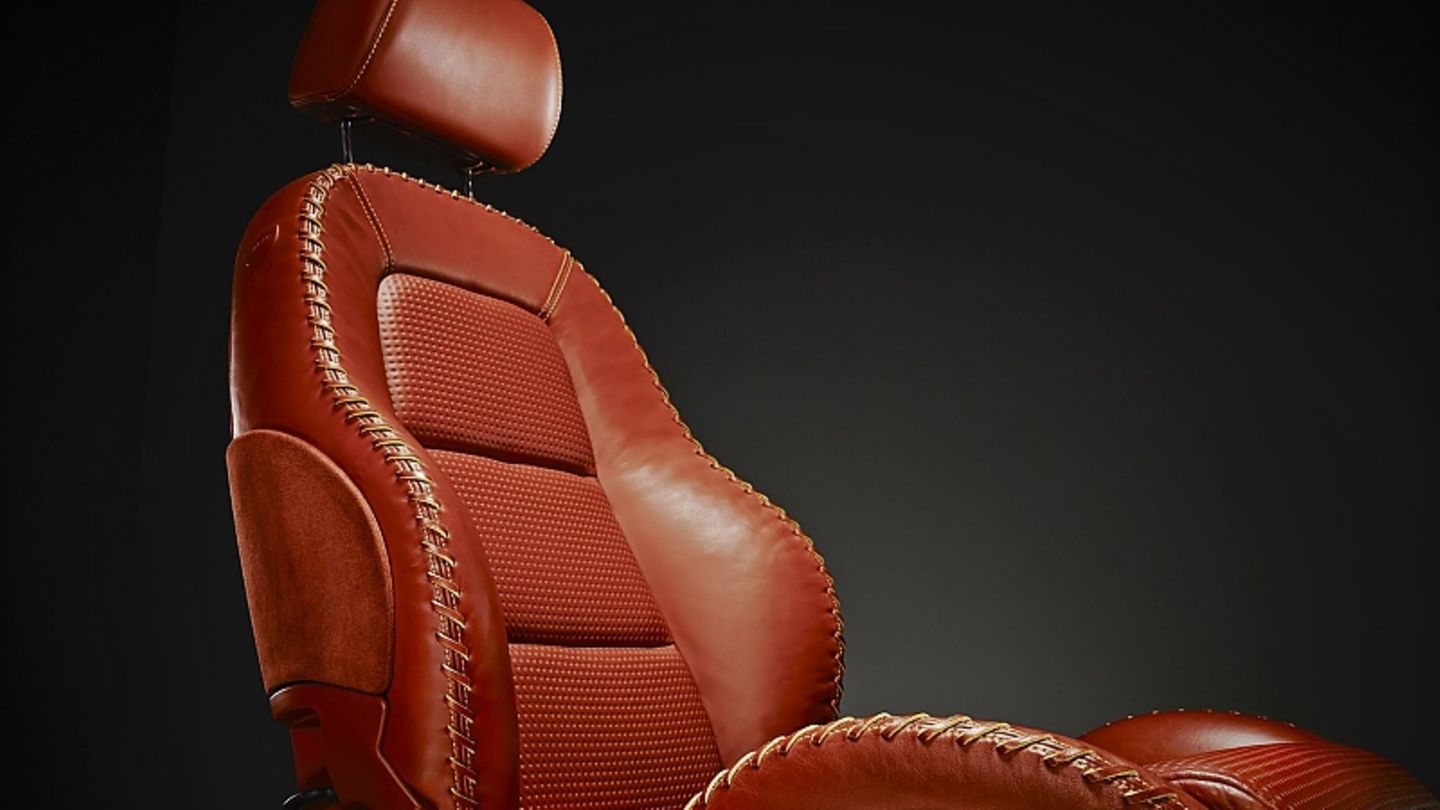Sustainability is driving the automotive industry into ever new abysses. In the interior, fabrics made from recycled materials should increasingly replace the classic equipment lines. Are the days of fine leather in the car numbered or will the luxury equipment of past decades remain in the range?
The trend towards new ecological interior materials in automobiles has been going on for a few years. Even luxury brands such as Land Rover or Bentley are now offering artificially manufactured seat covers made from recycled PET bottles, for example. When introducing the then new Range Rover Velar, chief designer Gerry McGovern referred to the eco-reference. Others follow suit. In the Enyaq, Skoda offers covers that consist of 60 percent recycled polyester and 40 percent virgin wool. Many people associate polyester with a sweaty body feeling. But the Czechs point to the cooling effect of this combination, that it is breathable and also filters pollutants and odors from the ambient air. Volvo is taking a similar path: The Swedish car manufacturer has announced that it will do without leather in all of its electric cars in the future. By 2025, a quarter of all materials in new Volvos should consist of recycled and bio-based materials.
The car manufacturers are currently outbidding themselves with sustainable materials that are supposed to revolutionize the interiors of their products in an ecological way. Everywhere is tinkering and developing. But the intention to research sustainable materials is one thing, getting them ready for series production is another. “As soon as technological advances meet our premium standards, we will offer vegan alternatives,” says BMW. A tried and tested alternative is artificial leather. In some models, the cheeks and the back of the front seats and the entire rear bench are covered with laboratory leather, only the seat panels are sometimes also made of real leather. In the USA, artificial leather upholstery under the name “Leatherette” is very popular, but does not offer the comfort of a real leather cover, as the surface is made of vinyl or another plastic that is modeled on the organic animal skins, but does not offer the comfort by far. The advantages of leather seats are great, especially as the car ages. Even with classics, leather still looks good after years or even decades and can be refreshed again and again. Fabric seats show their age quickly.
However, development is also progressing with this leather substitute. “If you can imagine it, we can implement it,” says the website of the manufacturer Ultrafabrics, which specializes in the production of polyurethane synthetic leather. The seats of the new Range Rover can also be covered with an Ultrafabrics product on request. If even the luxury steamers renounce traditional seat covers, one might think that the days of real leather in the car will soon be numbered. The truth of the equipment list is currently different: Almost half of all Volvos (46 percent) are ordered with leather upholstery. With the Skoda Enyaq it is around a third of the vehicles in Germany. Leather covers still have many advantages: leather looks high-quality, is easier to care for than fabric covers (which is an important point for families with small children in particular), smells good and it is still easier to resell the car. Of course, the luxury car manufacturers still offer full leather upholstery.
So are animals slaughtered just for their skin, so that they can be stretched onto car seats? According to PETA, yes. Together with the non-governmental organization Repórter Brasil, the animal welfare organization claims to have exposed the brutal conditions on several cattle farms in Brazil. From there, JBS SA is allegedly supplied, one of the largest leather processors in the world according to PETA and thus also the carmaker. Here car manufacturers are called upon to prevent such conditions in their supply chain. The Austrian leather supplier Boxmark does not want to follow this argument. According to this, the skin of a cattle makes up around three percent of the animal’s total value. So the additional income through the skin for the breeder is so small that he has no influence whatsoever on the economic decision of whether or not to keep animals. “Cattle are bred and slaughtered, regardless of whether there is a buyer for the skin or not, because the revenue share of the skin in relation to the meat or milk is far too low,” explains Boxmark design director Thorsten Buhl.
According to Boxmark, this fact also has an effect on the CO2 balance of natural leather, since cattle is not raised on the basis of the hides. According to. According to the Food and Agriculture Organization (FAO) of the United Nations, the meat and dairy industry produces around 9.1 million tons of raw cattle hides every year, which are processed by the automotive industry, among others. If this were not the case, around eight million tons of CO2 would be emitted when they were disposed of. What are the alternatives? Fabrics such as Alcantara are still popular because they convey that driving sport feeling. In addition, Alcantara is easier to care for than fabric covers. However, steering wheel rims and seat tracks that are covered with them appear “greasy” over time. Ultimately, however, this cover is also a synthetic ultra-microfiber fabric made of polyester and polystyrene.
At the beginning of 2021, the Research Institute for Leather and Synthetic Sheets (FILK, Freiberg Institue gGmbH) conducted a study to investigate vegan leather alternatives such as apple leather, pineapple leather, cactus leather and artificial leather, including important properties of leather such as tensile and tear strength, water vapor absorption, water vapor permeability and flexibility juxtaposed, which define the durability of the material. The result shows that individual materials are just as good or perhaps even slightly better than leather in one or the other criterion, but cannot, as a whole, come close to the performance of leather. But here too the development continues.
Source From: Stern
I am a 24-year-old writer and journalist who has been working in the news industry for the past two years. I write primarily about market news, so if you’re looking for insights into what’s going on in the stock market or economic indicators, you’ve come to the right place. I also dabble in writing articles on lifestyle trends and pop culture news.




